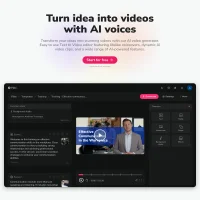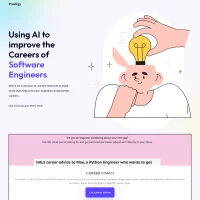Stay Ahead of the Curve
Latest AI news, expert analysis, bold opinions, and key trends — delivered to your inbox.
Figure’s humanoid robot takes voice orders to help around the house
3 min read Robotics firm Figure has unveiled Helix, a new Vision-Language-Action (VLA) model that allows humanoid robots to understand and execute household tasks via voice commands. This innovation comes two weeks after Figure stepped away from an OpenAI collaboration. February 20, 2025 17:09
Key Highlights
✅ Voice-Controlled Robotics – Users can give natural language commands like “Pick up the book” or “Put the dishes away,” and the robot will act accordingly.
✅ Advanced Object Recognition – Helix enables robots to recognize and interact with thousands of household items, even those unseen during training.
✅ Multi-Robot Coordination – The model can control two robots at once, allowing them to work together on complex tasks.
✅ Challenges in Home Robotics – Unlike structured factory environments, homes vary in layout, lighting, and clutter, making it harder to train robots efficiently.
✅ Long-Term Vision – Figure aims to refine its models through extensive training before making home robots widely available.
Why It Matters
🏠 Future of AI Assistants – A reliable home robot could revolutionize daily life by handling chores autonomously.
🤖 Beyond Industrial Use – Most humanoid robots focus on factories, but Figure is pushing for consumer-friendly applications.
💰 Investment & Recruitment – The announcement helps attract engineers and funding to accelerate development.
Reactions So Far
🔹 Excitement & Potential
✅ Breakthrough in Home AI – If successful, Helix could be a game-changer for personal robotics.
✅ Growing AI Applications – The ability to learn and adapt in real-time expands the possibilities for humanoid assistants.
🔸 Skepticism & Challenges
❌ Still Early-Stage – Helix is in its infancy, and current demos require significant behind-the-scenes effort.
❌ Cost & Accessibility – Home robots remain prohibitively expensive, with mass adoption likely years away.
Figure’s push into home robotics signals a future where humanoid assistants could seamlessly help around the house. But with major technical and financial hurdles still ahead, can Figure turn its vision into reality?



















 AI Agents
AI Agents